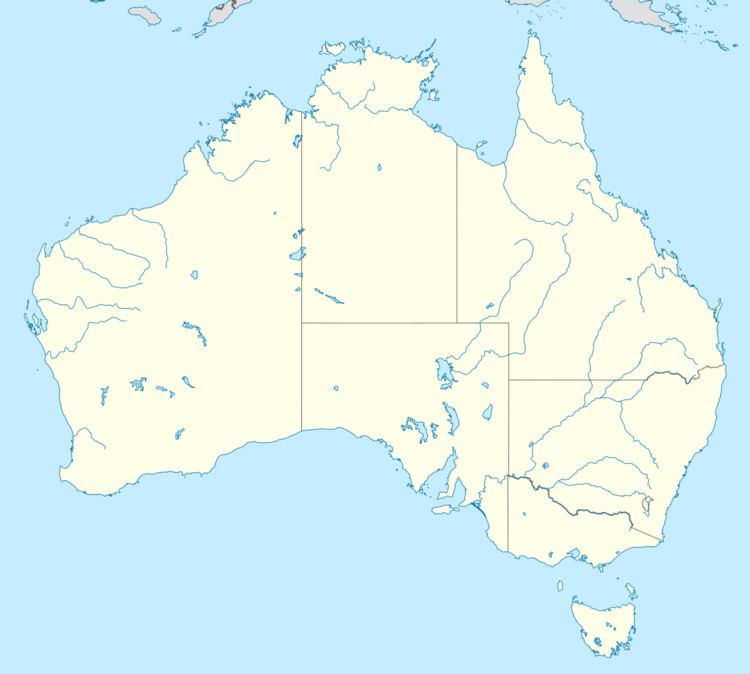State Western Australia Products Iron ore Address Newman WA 6753, Australia | Country Australia Website www.royhill.com.au Phone +61 8 6242 1000 | |
 | ||
Location Chichester Range, Pilbara region Company Hancock Prospecting (70%)
POSCO (12.5%)
Marubeni (15%)
China Steel Corporation (2.5%) Companies Hancock Prospecting (70%), POSCO (12.5%), Marubeni (15%), China Steel Corporation (2.5%) | ||
Legends the series the legend of roy hill
Roy Hill is an iron ore mining project in the Chichester Range in the Pilbara region of Western Australia, located 115 kilometres (71 mi) north of Newman and 277 kilometres (172 mi) south of Port Hedland. With indicated and inferred reserves of more than 2.4 billion tonnes, it is set to become one of the largest mining projects in Australia. Mining operations will produce 55 million tones of iron ore per annum with an operating life of more than 20 years.
Contents
- Legends the series the legend of roy hill
- Roy hill camp
- Mine development
- Transport
- Cattle station and homestead
- Indigenous inhabitants
- References
Gina Rinehart's Hancock Prospecting is the majority stakeholder in the project with a 70% interest. The remaining 30% stake is held by a consortium comprising POSCO (12.5%), Marubeni (15%), and China Steel Corporation (2.5%). As part of the ownership agreement the various consortium partners have also secured their proportionate share of iron ore production from the Roy Hill Project, representing a combined 16.5Mtpa of iron ore at full production.
Roy hill camp
Mine development
Project work commenced in mid-2011 and so far major dredging work of the harbour at South West Creek, within Port Hedland's inner harbour has been completed. Dredging will entail the removal of 7.5 million m3 of material to a depth of 6 metres (20 ft) below the low tide mark, and the construction of two new shipping berths: Stanley 1 and Stanley 2.
Construction of the Ginbata Airport at the mine site and internal mine roads have also been completed, as has clearing of the centre line for the railway. Ginbata Airport is capable of handling 737 aircraft and will be the hub for transporting the fly in, fly out workforce.
Transport
A new 344 kilometres (214 mi) 1,435 mm (4 ft 8 1⁄2 in) heavy haul, standard gauge railway from the minesite to Port Hedland will be built. The rail system will deliver five 232-wagon train loads of 32,000 tonnes of ore each per day.
Capital costs to develop the project are estimated to be at least A$7 billion, and the first shipments from the mine are expected in 2015. A permanent village to house 2,000 people is under construction at the mine site. 22°27′1″S 119°57′47″E
Roy Hill took delivery of the first of 21 ES44ACIs diesel-electric locomotives in January 2015.
Cattle station and homestead
Roy Hill homestead 22°37′13″S 119°57′30″E is located about 18 kilometres (11 mi) south of the proposed mine site.
Roy Hill Station was an important cattle station in the north-west, being on the Meekatharra-Nullagine Road and stock route. The station area is about 396,604 hectares (980,030 acres).
The station was established in 1886 by Nat Cooke who owned Mallina Station. Mallina had suffered from several years drought so Cooke was keen to secure new pastures. The first official lease was granted to D. MacKay in 1890 for an area of 20,000 acres (8,094 ha).
In 1915 the property was carrying 10,000 head of cattle. It is situated south of Mulga Downs Station, once owned by Lang Hancock and presently owned by his daughter Gina Rinehart.
A nearby 69 metres (226 ft) bridge crossing the Fortescue River to service the cattle industry was constructed in the late 1920s.
Indigenous inhabitants
The Indigenous inhabitants of the area are the Nyiyaparli People. The Nyiyaparli language is spoken.
